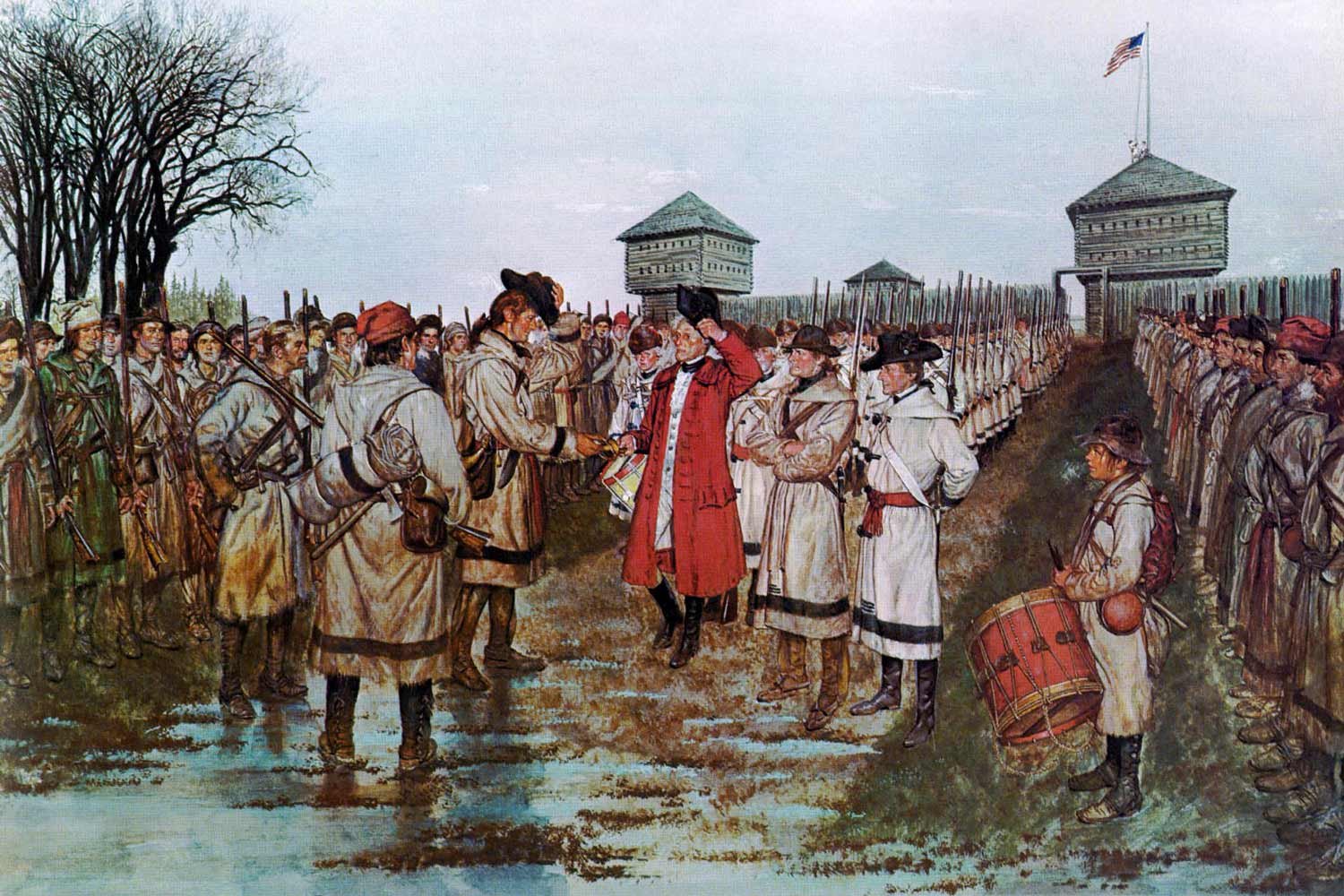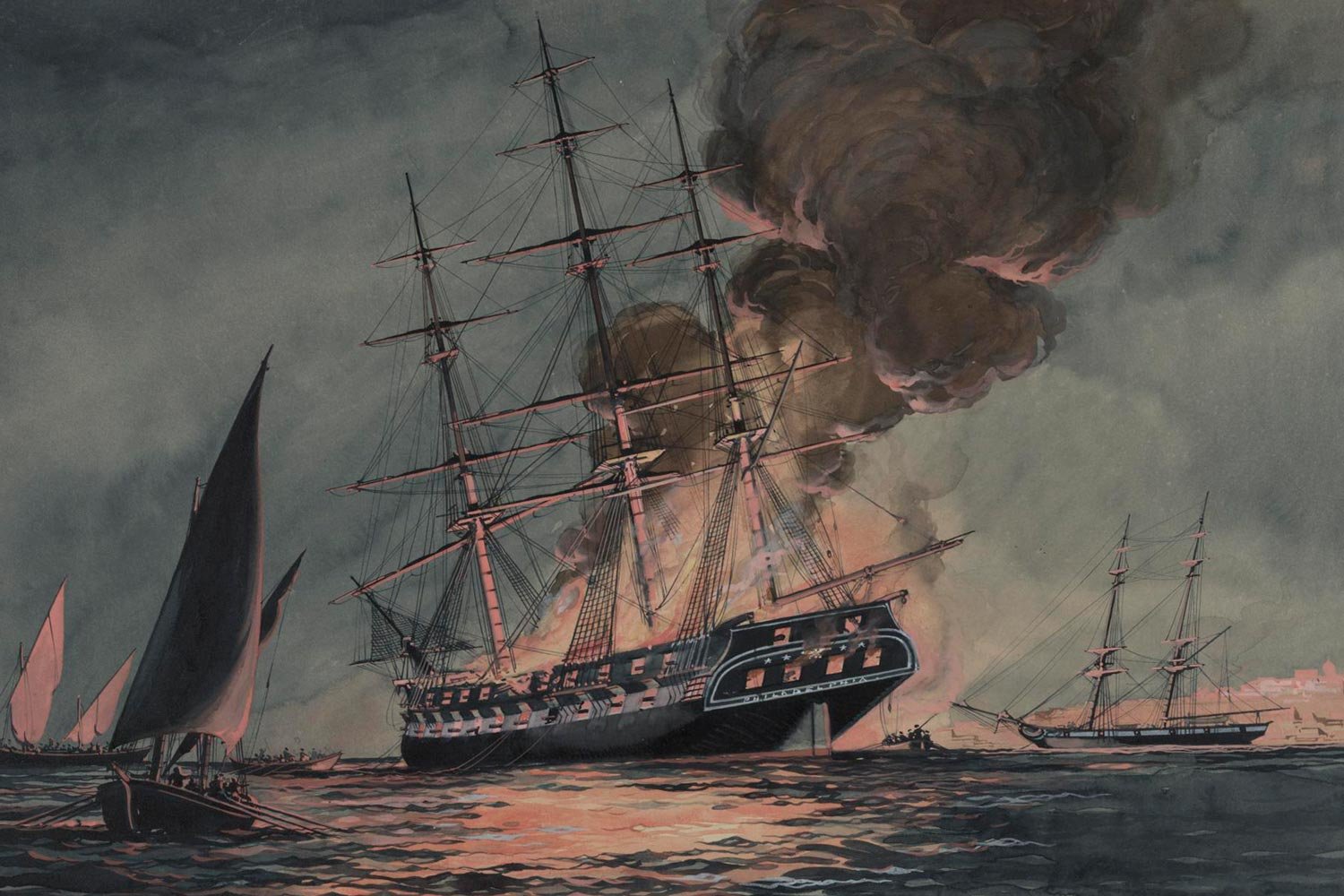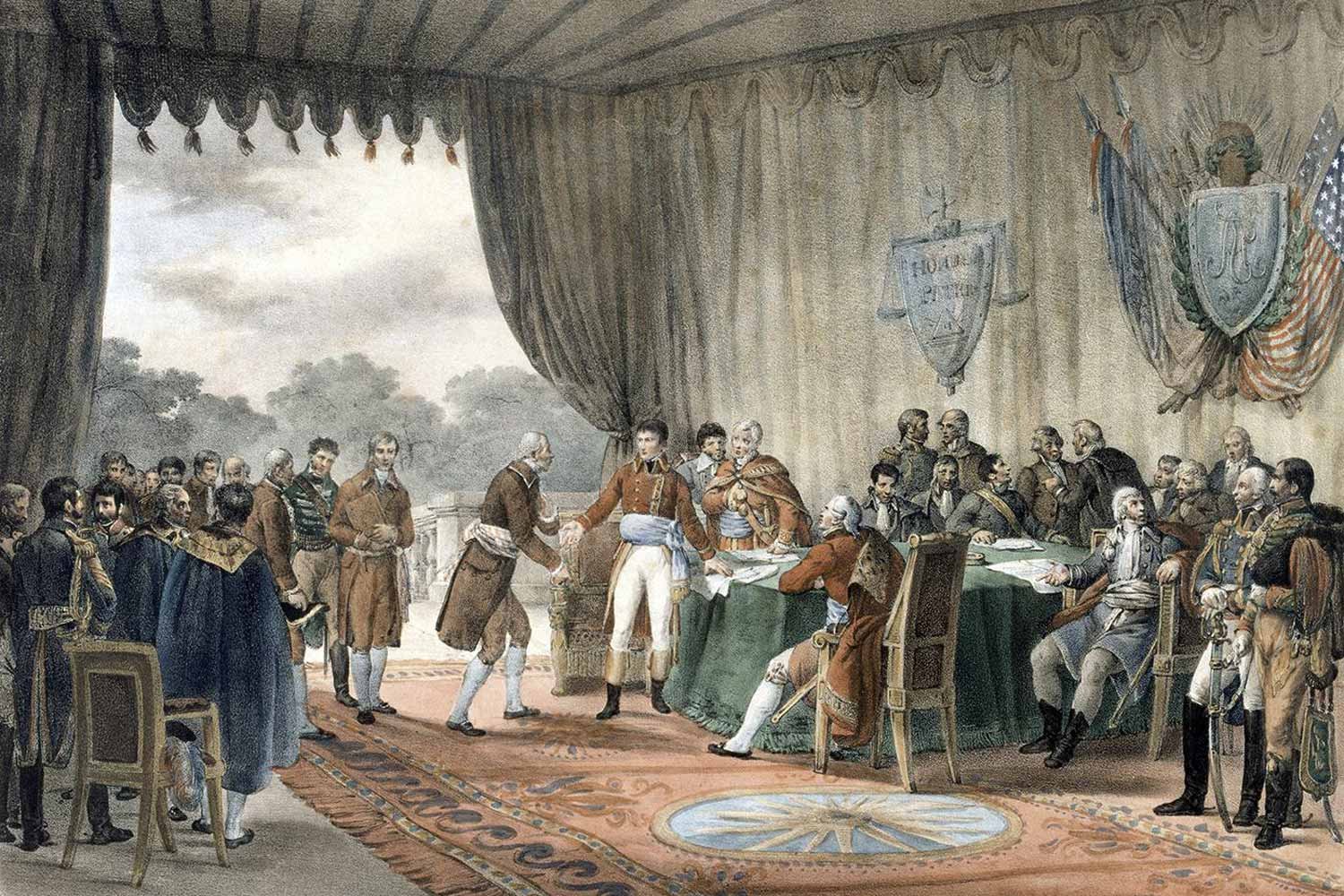Clark Captures Fort Sackville
Lieutenant Colonel George Rogers Clark and his band of 120 determined men arrived on the outskirts of Fort Sackville in the fading sunlight on February 23, 1779, undetected by the British garrison. They were tired and hungry, filthy and unshaven; they had not eaten for four days. After a two hundred mile trek across the flooded fields of what is now eastern Illinois, with their goal before them, Clark prepared to attack.
He first sent a proclamation for the inhabitants of Vincennes, all Frenchmen, announcing that he was “determined to take your fort this night” and “those desirous of enjoying the Liberty I bring you remain quietly in your houses…Those who were true friends to Liberty may expect to be well treated.”
Clark’s reputation had preceded him, and such was the fear and respect it instilled that the people simply stared at the woods hiding the Americans from sight and quietly moved indoors. Amazingly, not one of them informed Colonel Henry Hamilton, the British commander of Fort Sackville, that Clark and the Americans would soon fall upon the fort.
At twilight, Clark advanced from the woods to the town, expecting to be fired on by the fort’s cannon; but not a peep was heard from the garrison. The townsmen of Vincennes, anxious to be rid of their British masters, supplied Clark’s men with dry powder and ball and gave them the first meal they had had in days. Clark deployed his men around the fort and commenced the siege, announcing his presence by having his riflemen open fire on the palisaded walls.
An attack on the fort was the last thing Colonel Hamilton was expecting that night and at that moment he was enjoying a hot apple toddy with Captain Helm, the former American commander of the post and now his prisoner. When asked what all the racket was about, Helm calmly replied, “It means that you and all your men are prisoners of George Rogers Clark.”
“Clark’s Attack on Fort Sackville.” National Archives.
The fighting continued through the night, but with little damage being done by either side; seven Redcoats and one American had been wounded, and none had been killed. At 8:00am the next morning, Clark sent word into Fort Sackville, demanding that Hamilton surrender or suffer the consequences. Although initially defiant, around noon, a white flag was raised over Fort Sackville and Hamiliton agreed to terms.
While Hamilton and Clark were exchanging notes on possible surrender terms, a group of Ottawa and Delaware braves had the misfortune of approaching the fort, fresh from a scalping raid on American settlements. Mistaking the Americans for Vincennes militiamen, the Indians walked into their midst, howling acclimations, and displaying their scalps. Clark’s men fired into the group killing several and taking six prisoners. With Hamilton watching from the fort’s bastion, Clark executed the prisoners by splitting their skulls, one by one, with a tomahawk.
Following this grisly episode, the garrison lost heart and pleaded with Hamilton to accept Clark’s surrender terms before the same fate befell them. Perhaps somewhat worried about his own fate given his reputation as the “Hair-Buyer,” Hamilton agreed to give up the fort. The formal surrender took place at 10:00am on February 25, with the seventy-nine man garrison stacking arms on the parade ground of newly renamed Fort Patrick Henry.
Clark released the militiamen under Hamilton’s command after they signed a loyalty oath to the United States and agreed to fight for the America cause when called upon. The thirty-three British regulars, along with Hamilton and the other officers, were sent east to be dealt with by Virginia authorities in Williamsburg.
Hamilton was humiliated at losing his command to Clark’s ragged army and understandably bitter. However, in his after action report, Hamilton praised Clark’s conduct of the mission. Hamilton wrote, “The difficulties and dangers of Colonel Clark’s march from the Illinois, were such as required great courage to encounter and great perseverance to overcome.” Hamilton was eventually paroled in 1780 and, being an able administrator, would later serve as Deputy-Governor of the Province of Quebec and later Governor of Bermuda.
The capture of Fort Sackville would prove to be the highlight of Clark’s life, unusual in that it happened when he was only twenty-six years old. The future seemed bright for George Rogers Clark who was promoted to full Colonel in the Virginia militia, but it was not to be. Clark was a man built for hardy adventures and leading men in a desperate cause, circumstances generally only found within the crucible of war. Outside this daring space, Clark struggled to rise above his human failings.
Clark had a real magnetism about him, the kind that inspires other men, often older and more learned like Thomas Jefferson and Patrick Henry, to follow his lead. With piercing blue eyes and steady confidence, Clark led by virtue of his deeds and daring and his innate courage that was the true litmus test of a leader on the frontier. Moreover, his successes produced a reputation that instilled either fear or respect in others depending upon which side of the fence you sat.
Once, when issuing a warning to a recalcitrant Indian tribe to submit or face his wrath, Clark informed the chiefs, “I glory in war.” That he did.
Next week, we will discuss Kentuckians taking the fight into the Ohio Country. Until then, may your motto be “Ducit Amor Patriae,” love of country leads me.












Commodore Edward Preble assembled his considerable American fleet just outside Tripoli harbor in August 1804, determined to punish the city and its corsairs, and force Yusuf Karamanli, the Dey of Tripoli, to sue for peace.